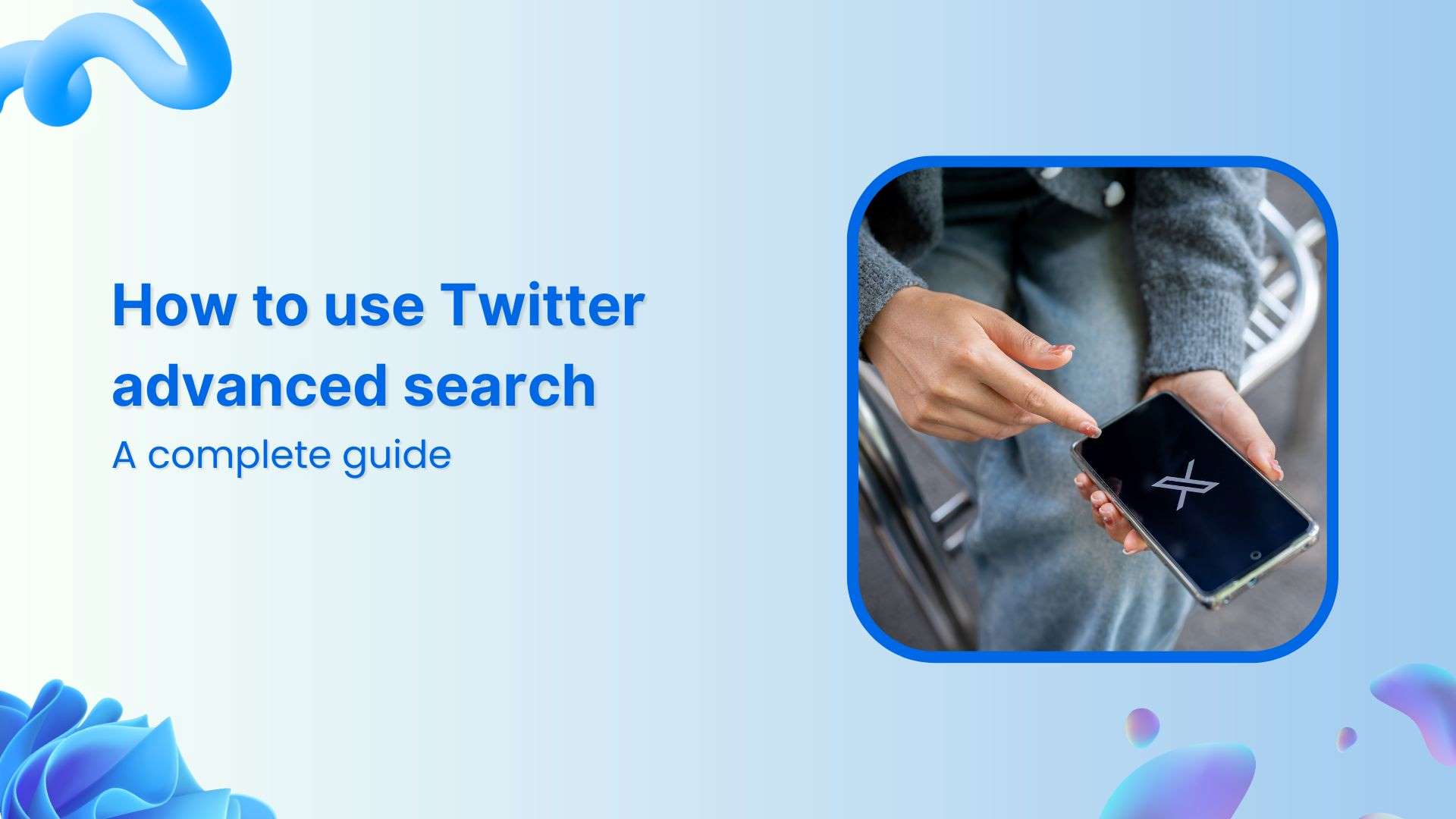Bulk-generate & schedule posts in seconds with Smart Scheduling. Try now!
Social media design: 12 awesome tips to stand out
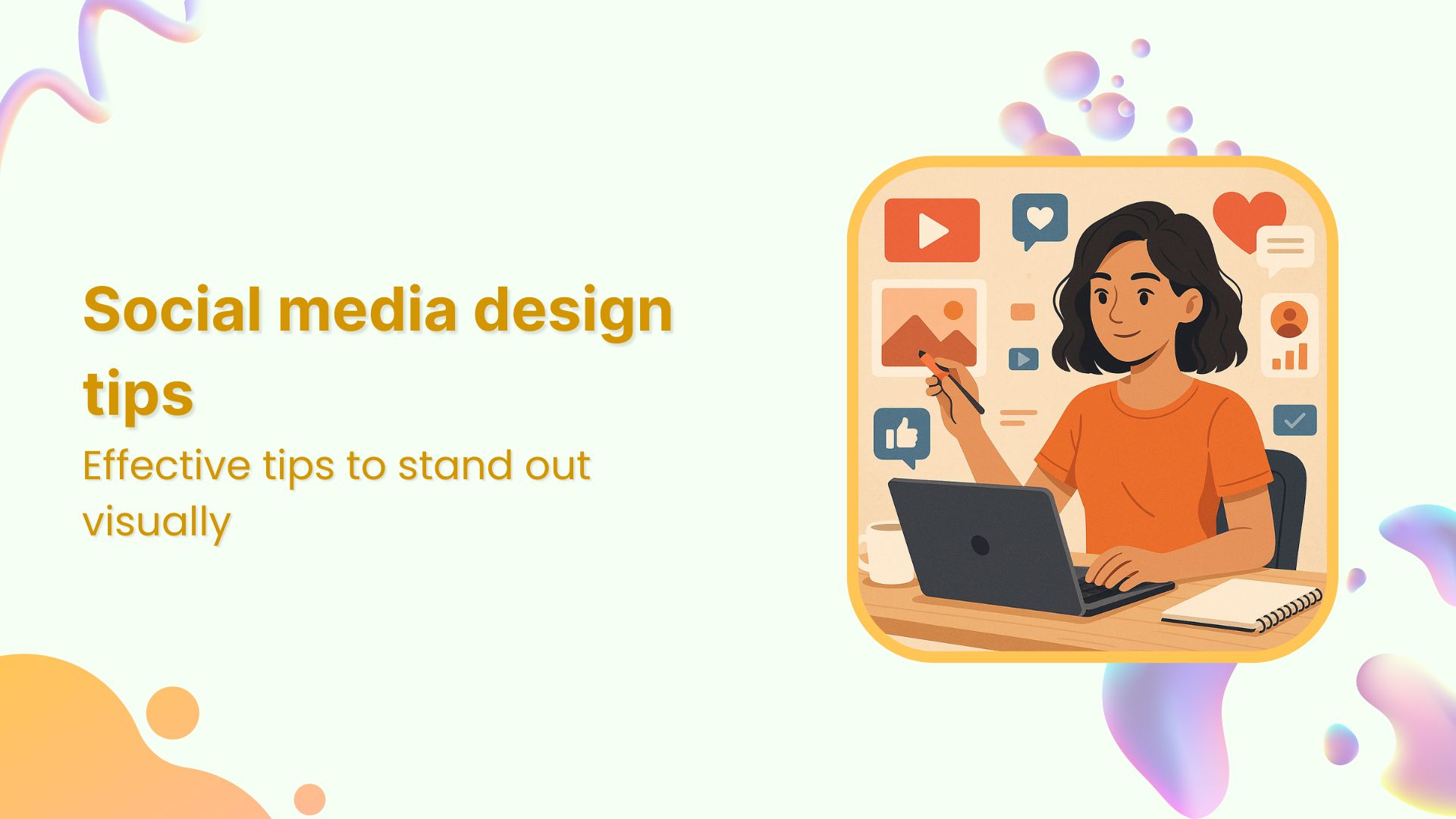
Visuals stimulate interest and interaction, encouraging your audience to like, share, and comment on your content. When it comes to retaining information, visuals are king. People remember approximately 80% of what they see, compared to only 20% of what they read. Marketing statistics also show that visual content receives 94% more views than text-only content, highlighting the effectiveness of visual content in capturing audience attention.
Given these compelling statistics, it’s clear that visuals aren’t just an optional add-on; they’re a critical component of a successful social media strategy. Whether you’re a small business owner or a seasoned marketer, understanding and leveraging social media design can significantly enhance your brand’s online presence, utilizing effective social media management.
What is social media design?
Social media design refers to the process of ideation, planning, and development of aesthetics for your social media pages. It involves creating visual content that aligns with your brand and engages your audience. Social media design is crucial because it helps establish brand recognition and adds to the overall aesthetic of a page or profile.
Types of social media graphics include:
- Infographics: These are valuable resources of information but are typically large and long files. Instead of posting the full infographic, share a snippet and direct your audience to your website for the complete version.
- Charts: Share valuable, shareable, and digestible data visualizations that provide insights into your industry or business practices.
- Memes: Timely and relevant memes can enhance engagement and shares, especially when they are tailored to your audience.
- Product images: Showcasing products creatively, such as through styled flat lays, can highlight their appeal.
- Short videos: Short, engaging videos are perfect for quick updates, tutorials, or sneak peeks. They capture attention quickly and are ideal for platforms like Instagram Stories and TikTok.
- Long videos: Long videos, such as detailed tutorials, behind-the-scenes looks, or interviews, can provide in-depth information and engage your audience more deeply. They are well-suited for platforms like YouTube.
Nike’s Instagram exemplifies a cohesive social media design strategy. Each post tells a story, features athletes, and highlights products through high-quality visuals, consistent colors, and engaging captions. This unified approach reinforces brand identity and keeps followers engaged.
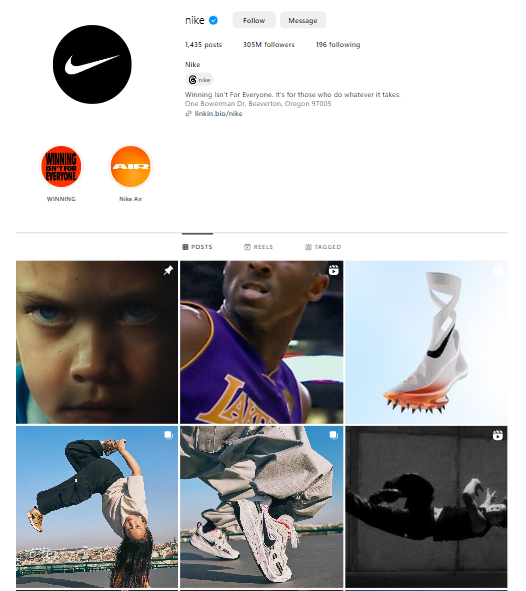
Significance of social media design on brand presence
Investing in great social media design is not just about making your profile look good; it directly correlates to your brand’s success online. Here’s why high-quality social media design is crucial for enhancing your brand presence:
- Building credibility and professionalism
Your business’s social media profile is the digital equivalent of a business card. It’s often the first thing your target audience sees when they look you up online. A professional and trustworthy profile ensures that your brand personality shines through your visuals.
Using high-quality, unique visuals helps attract the right audience and builds brand trust. Without them, you risk missing or misaligning your audience. For example, NYU uses Instagram Reels to share helpful videos on topics like commencement tickets and voting, reinforcing trust and showing commitment to its students.

- Increasing brand exposure and audience reach
Many social media platforms, especially visual ones like Instagram and Pinterest, prioritize high-quality, trendy content in user feeds. Visually appealing designs can help your content get featured on the Instagram Explore page, leading to a wider audience and increased followers. High-quality visuals also make your content more shareable, which can further increase your reach.
For example, McKinsey & Co. often shares links to their new reports and data sheets on their LinkedIn posts. They share a snippet of a data chart with an informative caption and a link to the full report. This not only drives engagement but also directs a significant amount of traffic to their website, increasing their reach and brand exposure.
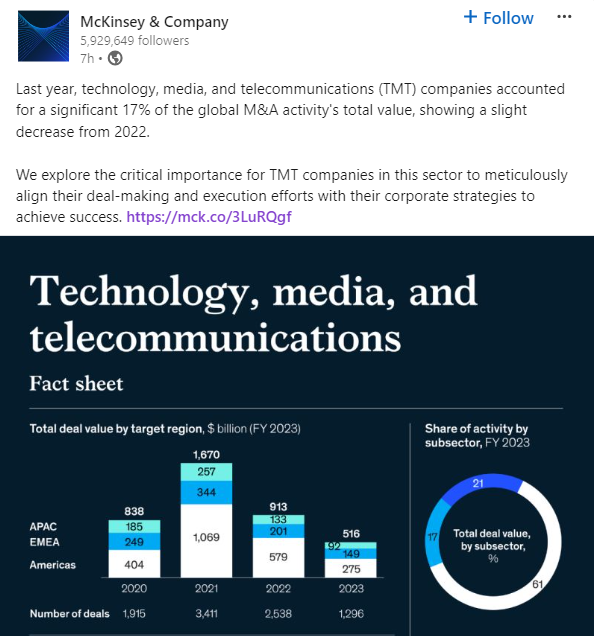
- Promoting brand recognition and awareness
Consistent design that aligns with your brand’s aesthetics helps in building brand recognition. When users see your brand’s logo, color schemes, and typography repeatedly, they start to recognize and remember your brand. This recognition fosters brand loyalty and encourages repeat engagement.
For example, Coca-Cola is known for its consistent use of red and black in their social media graphics. This consistent color scheme reinforces their brand identity and makes them instantly recognizable to their audience.
- Differentiating your brand from the competition
Given that all the social media platforms have become increasingly saturated, it’s crucial to stand out from the competition. Unique and eye-catching social media designs can set your brand apart and create a memorable impression. A well-crafted social media design acts as a powerful differentiation factor, ensuring that your brand gets noticed.
For example, GoPro uses amazing and picturesque images of nature shared by users of their brand on their social media platform. These stunning visuals not only highlight the capabilities of their products but also create a strong, memorable impression in a feed filled with more ordinary content.
- Enhancing user engagement and interaction
Visually appealing designs significantly boost user interaction with posts. Engaging content encourages likes, comments, shares, and click-throughs. According to studies, posts with images on social media receive 150% more engagement than text-only posts.
For example, Airbnb’s use of high-quality, user-generated photos showcasing beautiful homes and unique experiences around the world has significantly increased user interaction on their Instagram account. These visuals not only capture attention but also effectively convey the message, making the content more shareable.
15 beneficial social media design tips
Creating standout social media content is essential for capturing your audience’s attention and fostering engagement. Here are 15 beneficial social media design tips to help your brand shine online:
1. Provide value
The key to making your social media posts memorable and engaging is to provide value through your visuals. Value-adding graphics reinforce the message you want to communicate, making it easier for your audience to understand and engage with your content. Before posting, ask yourself if the visuals support your intended message or detract from it.
To add value through design, consider these creative approaches:
- Create checklists: Checklists are simple yet effective in providing clear, actionable steps. They can help your audience quickly grasp the information and apply it.
- Use infographics: Infographics are excellent for presenting complex information in a digestible format. They break down data into visually appealing sections, making it easier for your audience to understand and remember the key points.
- Showcase product features: Highlight the unique aspects of your products with detailed images. Show how your product stands out and why it’s beneficial for your audience.
- Provide step-by-step guides: Visual guides can help your audience understand processes more effectively. By using relevant images for each step, you make the content more engaging and easier to follow.
For example, Intel shares case studies and testimonials on Instagram to highlight how businesses succeed with their products. This builds trust and reinforces reliability, especially important since most tech buyers read multiple reviews before making a purchase.
2. Keep it simple
Simplicity in design is powerful. Overly complicated graphics with fancy fonts and intricate details can overwhelm your audience and obscure your message. The most engaging graphics are often those that are simple, clear, and memorable.
Here are some tips to keep your social media designs simple:
- Use one font style: Consistency in typography ensures readability. This helps in maintaining a uniform look across all posts, which is key for brand recognition.
- Keep text short and concise: Limit the amount of text to maintain focus on the visual elements. Short, impactful text can convey your message more effectively than lengthy descriptions.
- Use a single call-to-action (CTA): One clear CTA is more effective than multiple conflicting messages. Make sure your audience knows exactly what action to take next.
- Stick to a limited color palette: Use two main colors and two accent colors to maintain visual harmony. Consistent use of colors helps in reinforcing brand identity.
For instance, Tiffany & Co. is a master at keeping it simple. Their social media posts consistently feature their iconic Tiffany Blue and a clean, elegant font. This minimalistic approach not only makes their posts visually appealing but also instantly recognizable, reinforcing their brand identity with every post.
3. Use contrasting colors
Contrasting colors can make your social media posts stand out in a crowded feed. They help draw attention to key elements such as text, links, and CTA buttons. According to research, 90% of snap judgments made about products are based on color alone, emphasizing the importance of color in design.
When using contrasting colors:
- Highlight CTA buttons: Ensure your CTA buttons are easily noticeable by using contrasting colors.
- Enhance readability: Use light colors against dark backgrounds or vice versa to make text readable.
- Create visual hierarchy: Use contrast to guide viewers’ eyes to the most important parts of your graphic.
For example, Asana consistently uses contrasting colors in all its posts. The light and dark contrast makes the posts visually appealing and ensures key elements stand out. Although the same colors are not used throughout their Instagram page, the light and dark contrast is maintained, creating a cohesive and engaging visual experience.

4. Leverage user-generated content
User-generated content (UGC) is a powerful way to build trust and authenticity. Featuring content created by your audience not only showcases your products in real-life settings but also fosters a sense of community and engagement. UGC is particularly effective because it comes from actual users, making it more relatable and trustworthy.
To leverage UGC:
- Encourage sharing: Ask your followers to share their experiences with your products using a specific hashtag.
- Feature user posts: Regularly feature user-generated content on your social media pages, giving credit to the original creators.
- Create contests and challenges: Encourage users to participate in contests or challenges that involve sharing their own content.
For example, Glossier excels at leveraging UGC by sharing real customer photos and videos using their products. This strategy contrasts with traditional beauty brands that relied on airbrushed images of professional models. Glossier’s approach not only increases the trustworthiness of the brand but also makes their audience feel like brand ambassadors.
5. Utilize visual direction
The way the human eye moves across designs, images, websites, and other visual elements is often consistent. This is why it’s important to guide your audience along a deliberate “path” in your images. Research has shown that people tend to read in an “F” pattern, an “E” pattern, and sometimes a “Z” pattern. Placing important and eye-catching elements on the upper left and left side of your design can be key.
To create a deliberate flow:
- F pattern: Place key elements like headlines and images along the left side and top of your design.
- E pattern: Similar to the F pattern but with an additional horizontal line, perfect for more detailed content.
- Z pattern: Ideal for designs meant to be read quickly, guiding the eye from the top left to bottom right.
These directions are particularly essential for visuals that include text, such as infographics, where you want the audience to read the content. For example, PwC, a multinational professional services firm, has a strong social media presence and often uses LinkedIn to post informative content. They adhere to visual direction in their designs, ensuring that important information is placed along the paths where the eye naturally travels. Here they have used the E pattern of design to make the text on the visual more readable.
6. Maintain consistent branding
Consistency is crucial for brand recognition and success. Think of Coca-Cola’s vibrant red, Cadbury’s rich purple, or Nike’s ‘Just Do It.’ Consistent branding can be achieved by using the same fonts, colors, and images in your social media designs.
Key points to ensure consistency:
- Use the same fonts: Stick to a specific set of fonts for all your designs to maintain uniformity.
- Color palette: Use a consistent color palette that aligns with your brand’s identity.
- Imagery: Incorporate similar styles of images to create a cohesive visual identity.
For instance, here you can see that Cadbury maintains its strong brand identity by consistently using its signature rich purple color throughout its social media pages. This consistency helps build a recognizable brand presence that stands out to its audience.
7. Be mindful of spacing out elements
One of the common mistakes in social media graphics is the misuse of white space. Sufficient white space allows readers to easily read your content and see your CTA buttons and links. It creates contrast between various elements in a graphic, guiding the reader’s attention to specific parts of your post.
Tips for effective use of white space:
- Create contrast: Use white space to separate different elements, making your design less cluttered and more readable.
- Decide on spacing ratios: Depending on your design, use ratios like 1:1, 2:3, or 3:4 to determine the spacing between elements.
White space is crucial for creating a clean and professional look, enhancing the overall aesthetic of your social media posts.For instance, here Zoom effectively utilizes white space in its LinkedIn post when sharing a customer success story. The design is simple, allowing more focus on the text that highlights the platform’s benefits for a particular organization. There is ample spacing, and the text is written in large fonts, making the content easy to read and understand.

8. Incorporate visual storytelling
Effective social media design tells a story within the constraints of a single frame. Crafting a narrative that resonates with your audience’s emotions, aspirations, or pain points adds depth to your graphics, making them more relatable and share-worthy. Visual storytelling can take various forms, such as step-by-step guides, before-and-after transformations, or compelling visual metaphors.
To master visual storytelling:
- Connect emotionally: Use visuals that evoke emotions relevant to your brand message.
- Show progression: Demonstrate a journey or transformation to engage your audience.
- Use visual metaphors: Simplify complex ideas with relatable images.
For instance, the well-known hair care brand Olaplex often posts before-and-after images of its users’ hair. Alongside these pictures, they also mention the specific Olaplex products the users utilized. This approach not only showcases the effectiveness of their products but also tells a compelling story of transformation that resonates with their audience, making the content highly engaging and share-worthy.
9. Design with platform-specific sizes in mind
Each social media platform has its own image dimension guidelines, which frequently change. Staying updated with these changes is crucial to ensure your visuals display correctly and look professional. Designing within the recommended sizes prevents your images from being cropped awkwardly or losing resolution.
Here are 2024’s recommended visual sizes for the top social media platforms:
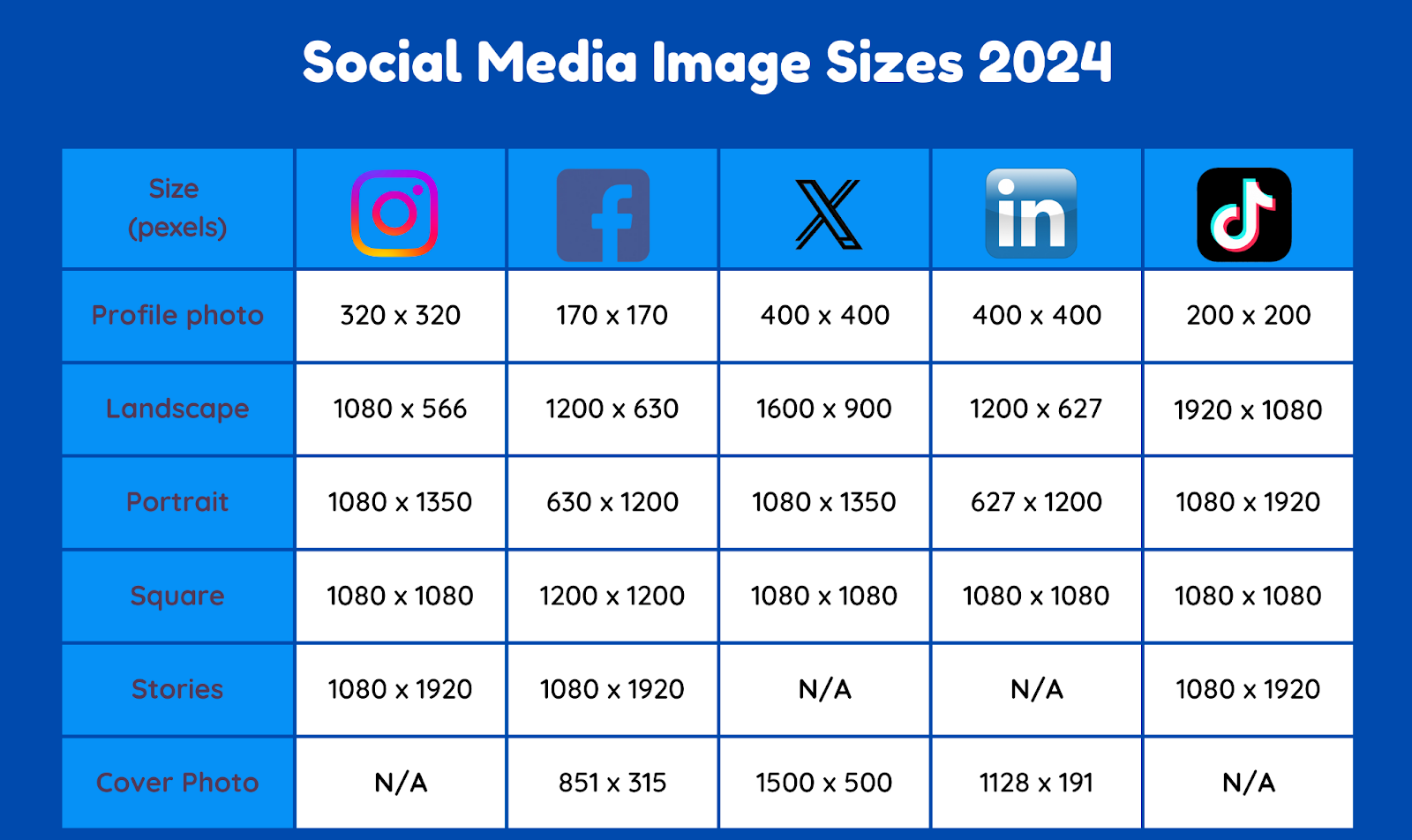
10. Prepare templates for efficiency
Running a business is time-consuming, and there will be moments when you need to produce social media content quickly, such as during flash sales or time-sensitive promotions. Having a set of customizable templates can save you time and ensure consistency across your posts.
Key elements to include in your templates:
- Main image: The primary visual that grabs attention.
- Supporting images: Additional visuals that enhance the main image.
- Text: Editable areas for your promotional or informative copy.
- Illustrations: Icons or graphics that add context.
- Colors: Consistent brand colors to maintain visual harmony.
Templates speed up your social media marketing efforts and ensure you don’t need to hire someone to create graphics on the fly. They allow for quick customization while adhering to your brand’s look and feel. Tools like Canva or Adobe Spark offer templates that can make content creation process easy.
11. Watch out for copyright issues
Sourcing images for social media can be challenging, particularly when it comes to understanding copyright laws. Misusing copyrighted images can lead to serious legal consequences, so it’s important to be diligent about where you source your visuals.
To avoid copyright issues:
- Read fine print: Always check the usage rights and licenses of stock photos, templates, and illustrations.
- Inquire when unsure: If any terms are unclear, contact the image owner or site for clarification.
- Give Credit: When necessary, credit the original creators, especially if you are reposting user-generated content.
For instance, National Geographic often showcases pictures of landscapes, wildlife, and historic sites taken by photographers. They are mindful of giving credit to the photographers by mentioning their names and handles in the captions. This practice not only respects the creators’ rights but also enhances the authenticity and credibility of their posts.
12. Adjust your design based on analytics
Social media is a quick and unstable space. There are new trends coming in every other day, and making the most of them is crucial. The moment you post something, it enters a stream of content, competing for attention with countless other posts. The advantage of such environment is that it provides quick feedback.
Most content reaches its peak impressions, likes, and comments within a few hours to a day. This allows you to test and swiftly determine which designs are effective and which are not, enabling you to adjust your design strategy accordingly.
To optimize your social media designs using analytics:
- Monitor performance: Use platform-specific analytics to track metrics such as impressions, engagement rates, and watch time for videos. These insights help you understand what resonates with your audience.
- A/B testing: Implement A/B testing to compare different design variants and identify which ones perform better. This method helps rule out anomalies and ensures you make data-driven decisions.
- Benchmarking: Establish benchmarks based on your best and worst performing content. This context-specific approach helps set realistic expectations and identify success or failure.
For example, ContentStudio is an effective tool that helps track social media analytics, allowing you to monitor performance across platforms like Facebook, Twitter, and Instagram. It provides real-time insights on engagement rates, audience growth, and top-performing posts.
With features like content comparison and competitor analysis, ContentStudio enables you to refine your design strategy based on data, ensuring your content stays relevant and impactful.
Top 5 social media design tools in 2024
Creating engaging social media content requires the right tools to design graphics that captivate your audience. Here are the top five social media design tools in 2024, each offering unique features to help you stand out.
1. Canva (Web, iOS, Android, macOS, Windows)
Canva is a versatile and user-friendly design tool ideal for creating social media graphics. It offers an extensive library of over a million templates, graphics, and photos available for free, with even more assets unlocked with a Canva Pro and Teams subscription.
Pros:
- Countless templates
- Powerful free plan
Cons:
- Paid features are visible and can be annoying if accidentally used
Key features:
- Drag-and-drop editor
- Collaborative tools even on the free plan
- AI-powered features like text-to-image generation
Pricing:
- Free: Access to 1,000,000+ templates and 5GB cloud storage
- Teams: $15/month for three people for additional designs, features, and 1TB storage
Canva is perfect for anyone looking to create professional-quality designs without needing extensive graphic design experience.
2. Adobe Express (Web, iOS, Android)
Adobe Express is a powerful design tool from Adobe, known for its robust editing features derived from Photoshop and Illustrator. It is designed for creating social media and web graphics with ease.
Pros:
- Best-in-class editor
- Free AI features
Cons:
- Fewer templates compared to Canva
- Some features push for upgrades
Key features:
- Advanced layer options
- Integration with Adobe Fonts and Adobe Stock
- AI-powered tools like generative backgrounds and custom text effects
Pricing:
- Free: Access to 100,000+ templates, 25 AI credits/month, and 2GB cloud storage
- Teams: $12.99/month per seat for logo upload, branded templates, 250 AI credits/month, and 1TB storage
Adobe Express is ideal for users who need more advanced editing capabilities and plan to scale their design needs.
3. Pablo by Buffer (Web)
Pablo by Buffer is a minimalist tool perfect for quickly creating social media images by adding text over images. Developed by the Buffer team, it’s straightforward and highly accessible.
Pros:
- No sign-up required
- Simple and quick to use
Cons:
- Very basic features
Key features:
- Direct access to Unsplash images
- Simple text and image positioning tools
- No account necessary for use
Pricing:
- Free
Pablo by Buffer is perfect for users who need to create basic but attractive social media posts without the hassle of complex tools.
4. Snappa (Web)
Snappa offers a robust set of design tools with access to all features on its free plan, though it limits the number of downloads.
Pros:
- All features available on the free plan
Cons:
- Limited downloads on the free plan
- Less extensive template library compared to Canva or Adobe Express
Key features:
- Access to thousands of templates and graphics
- Simple, user-friendly interface
Pricing:
- Free: 3 downloads/shares per month
- Team: $30/month for 5 users for unlimited downloads, team collaboration, and additional features
Snappa is great for users who only occasionally need to create social media graphics and want full access to features without immediate cost.
5. VistaCreate (Web, iOS, Android)
VistaCreate, formerly known as Crello, offers extensive free features, including a vast template library and storage space, making it an excellent choice for both social media and print design.
Pros:
- Large number of free templates
- Generous storage space
Cons:
- Lacks some advanced features of Canva or Adobe Express
Key features:
- 100,000+ free templates
- 10GB of file storage
- Styles feature for easy color palette and font changes
Pricing:
- Free: Thousands of templates and 10GB storage
- Pro: $13/month for premium templates, background removal, team accounts, and more
VistaCreate is ideal for users looking for a comprehensive free plan with substantial template and asset options.
Final thoughts
Effective social media design plays a critical role in enhancing brand recognition, boosting visibility, and driving meaningful engagement. While social media remains a powerful marketing channel, it’s also more competitive than ever. To truly stand out, brands must master design principles and adapt quickly to evolving trends.
Staying ahead means embracing AI-driven tools, experimenting with personalized content strategies, and continuously analyzing performance metrics. By applying the design tips shared above and exploring the recommended tools, you’ll be better equipped to craft visually compelling and impactful content. Keep testing, learning, and optimizing because in the fast-paced world of social media, relevance is everything.
Frequently asked questions
What makes a good social media design?
A good social media design effectively combines visual appeal with clear messaging. It maintains consistency in branding through colors, fonts, and imagery, ensuring brand recognition. The design should be engaging, easy to understand, and optimized for each platform’s specific requirements. High-quality visuals, compelling stories, and strategic use of white space and contrast enhance user engagement and interaction.
How do I make my social media posts attractive?
To make social media posts attractive, use high-quality images and videos that resonate with your audience. Keep designs simple and clutter-free, employing a consistent color palette and fonts. Add value with informative or entertaining content, and use eye-catching elements like contrasting colors and clear CTAs. Leverage user-generated content, if possible, and maintain a cohesive visual theme.
Recommended for you


Powerful social media management software
14-day free trial - No credit card required.
